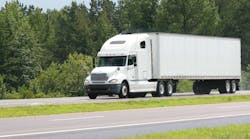Electric fleet success relies on smarter power and route management, not lower battery costs
Key takeaways
- EV fleet costs hinge on depot power, route design, temperature, and payload—not just battery prices.
- Smart charging schedules and route clustering reduce demand spikes and hardware overspend.
- Managing weather, weight, and charging windows ensures electric delivery fleets remain profitable in the long term.
Battery pack prices hit record lows last year, diesel has eased from 2022 peaks, and some utilities now offer EV-specific business rates that tame demand charges—together nudging delivery fleets toward electrification. Yet the business case still hinges on a handful of operational choices most spreadsheets miss.
Our field observations and public data point to four cost centers—depot power, route energy variance, thermal load, and battery mass—that can make or break total cost of ownership (TCO). The fleets staying on budget stagger dwell, cluster routes by energy, schedule for weather, and treat pack size as a revenue decision, not a spec-sheet reflex.
Depot charging: Capacity, timing, and demand fees
A 200-van hub can plausibly pull ~5–7 MWh across a night if routes are short and top-ups are partial; compress that into a tight window, and demand charges spike. That’s why utilities such as PG&E offer Business EV rates (BEV1/BEV2) that replace conventional demand charges with EV-specific pricing—more predictable for depots with “peaky” load. Pair that with managed charging and a small on-site battery, and you can shave peaks without missing departures.
“By turning off the chargers for 30 minutes, we reduced demand by 0.5 MW,” said Lea Clanton of Southern Company New Ventures, describing a Ford Pro demand-response pilot—concrete proof that software-controlled charging windows can lower bills and ease grid stress.
What operators should do: Stagger dwell so not every van charges overnight; sequence by next-day need (distance, elevation); use a 2–3 MWh buffer for the heaviest 60–90 minutes; and trench once with extra conduit to add posts later. (NREL and RMI both show managed charging materially reduces peaks and capex.)
Route standardization: Control variance before you size hardware
Energy draw isn’t just miles. Stop density, grade, and idle swing kWh/route; sizing packs and dispensers for the outlier day bloats capex. NREL modeling underscores that depot operations with predictable dwell enable load-shifting and lower peak power when charging is scheduled to real route energy, not “worst case.”
What operators should do: Cluster routes by kWh (not distance). Add TMS guardrails so assignments that leave a cluster require an override plus a mitigation (mid-shift top-up, locker handoff). Track return-SOC bands closely, and when they tighten, shrink charge windows and rightsize hardware. (Road grade alone can swing trip energy dramatically on individual routes.)
Thermal penalties: Plan for weather the way you plan for miles
Cold and heat add overhead via HVAC and battery impedance. Recent NREL work finds heat-pump HVAC lifts range 15%–22% at roughly 14 degrees Fahrenheit versus resistive heat; consumer-fleet datasets also show meaningful winter gains from heat pumps and preconditioning on the plug. Make weather a planned input, not a daily scramble.
What operators should do: Define seasonal route tables that auto-shrink stops or add a planned mid-shift top-up once temps cross thresholds based on your measured kWh/temperature slope. Specify heat-pump HVAC with driver-only zones; dispatch the coldest starts after chargers free up so you can precondition on grid power.
Mass trade-offs: Battery size versus payload and revenue
On GVWR-limited vans, every extra 10 kWh is weight you carry—and cubic feet you can’t monetize. With pack prices dropping (2024 global average $115/kWh; BEV packs below $100/kWh), it’s tempting to “just buy bigger,” but payload loss becomes a recurring revenue tax. Apply the 80% days covered plus 15% reserve rule, and manage outliers with routing/charging tactics.
What operators should do: Specify lightweight racks/panels to claw back a few hundred pounds; keep harness/mount designs ready for higher-density packs later.
Summary: The bottom line for operators
Electrification goes fastest when the operating model and the electrical model are designed together. The four swing factors are clear: 1) flatten depot peaks instead of buying capacity you don’t need, 2) standardize routes by kWh, not miles, 3) plan for weather the way you plan for distance, and 4) rightsize packs to protect payload and revenue.
Do these four things this quarter:
- Depot power: Stagger dwell, sequence by next-day need, and add a small on-site buffer to shave the worst 60–90 minutes.
- Routing: Build kWh-based clusters and enforce TMS guardrails so out-of-cluster assignments carry a mitigation plan.
- Thermals: Make pre-conditioning and heat-pump SOPs non-negotiable and use seasonal route tables tied to temperature thresholds.
- Mass: Spec packs to cover about 80% of days with roughly 15% reserve, and use lightweighting to win back payload and keep mounts ready for denser future packs.
Track these KPIs weekly: depot peak kW, return-SOC band width, kWh/mi by temperature bin, and payload utilization vs. revenue. If those four trend the right way, the numbers that looked good in month three still look good in year three.
About the Author

Chaitanya Balla
Chaitanya Balla is a product leader at Grainger, leading digital transformation and fleet technology for the company’s KeepStock inventory-management platform. Previously, he led Amazon’s fleet technology and electric delivery vehicle programs with Rivian and held product and engineering roles at Ford.


